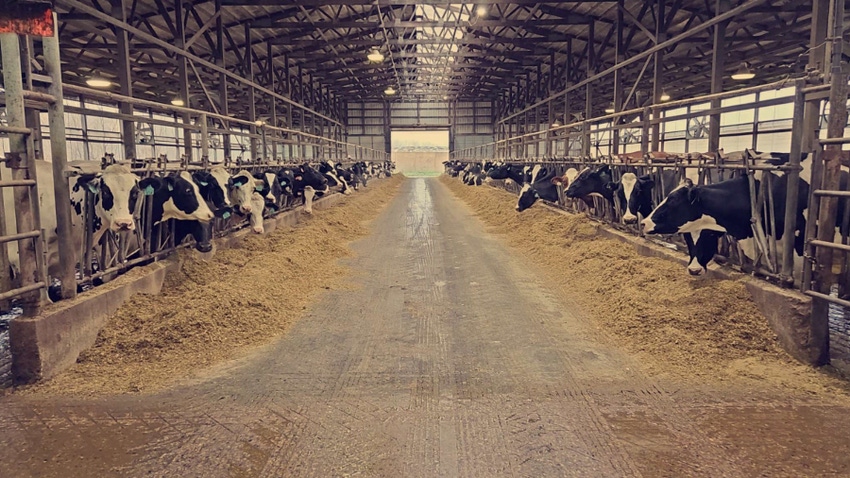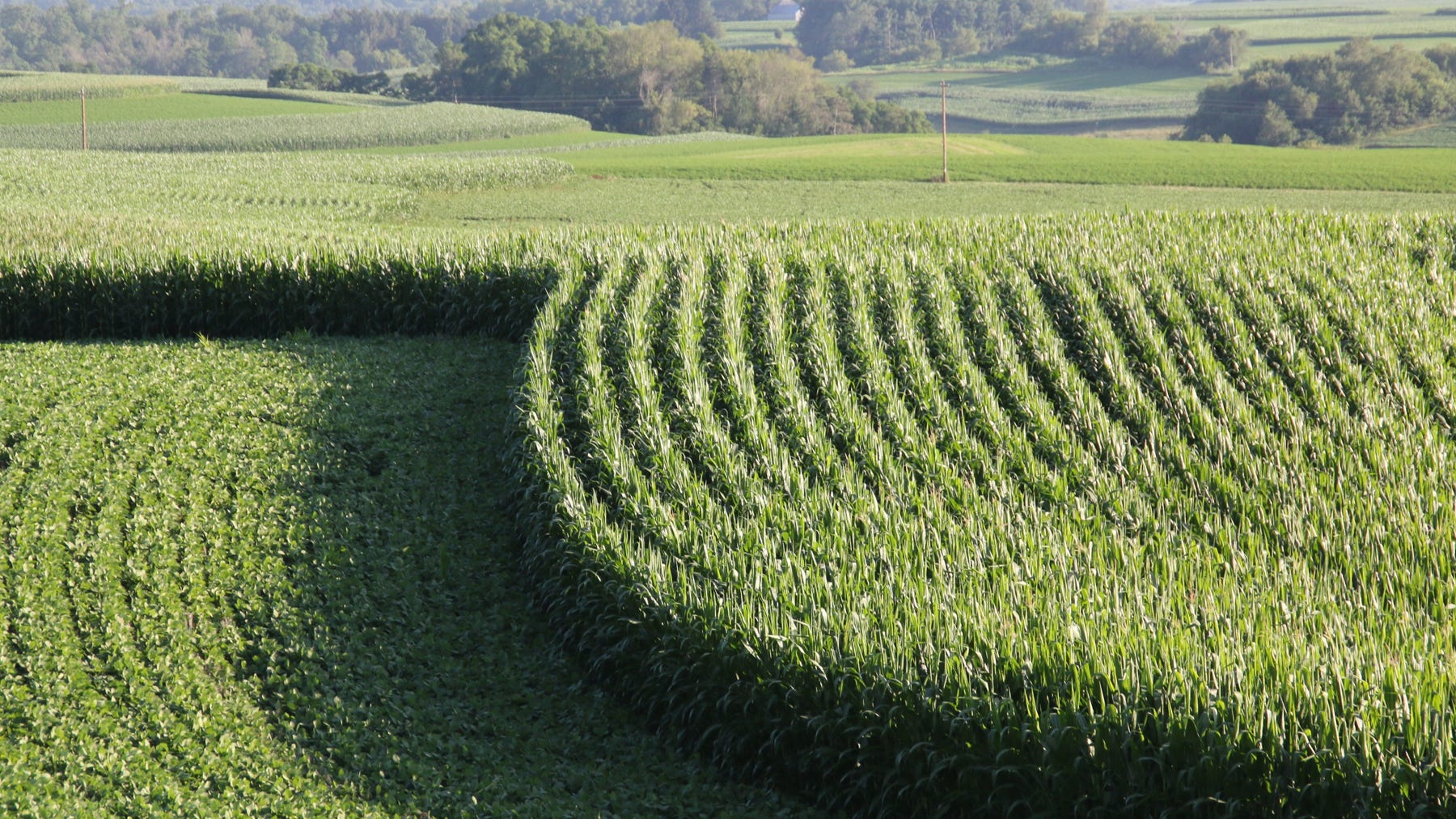
Each January, University of Wisconsin agricultural economists and farm leaders gather in Madison, Wis., to look back at the previous year and look forward to the coming year at the annual Wisconsin Agricultural Outlook Forum. This year’s event was held Jan. 23 at Union South on the UW-Madison campus.
“U.S. net farm income in 2023 was down 20% from the record high in 2022, but it was still 31% above average,” said UW-Madison ag economist Paul Mitchell, who is director of the Renk Agribusiness Institute.
While cash receipts for beef were up 16.5% in 2023 over 2022, the rest of the farm commodity prices were down in 2023 compared to 2022, Mitchell said.
“Dairy cash receipts were down 18.3% in 2023, and corn was down 10.5%,” he explained.
Drought impact
Mitchell spoke about the drought that gripped much of the state from late May through August, and through September in southwest Wisconsin and other areas scattered across the state.
“Half the corn and soybeans were in rough shape last summer in Wisconsin,” Mitchell noted. “We had poorer-looking crops in Wisconsin than the U.S.”
According to USDA, U.S. corn yielded an average of 177 bushels per acre last year, which is a record.
“Drought had much less impact in Wisconsin than you think,” Mitchell said. “Yield losses were spotty throughout the state. Wisconsin corn yielded an average of 176 bushels per acre, which is the third-highest state corn yield average ever. “
There were yield losses, Mitchell said. “Wisconsin farmers have already received $132 million in crop insurance payments for corn, and there will be more to come in March.”
Wisconsin hay stocks, he noted, are at a record low.
On a positive note, Mitchell said Wisconsin land values went up 11% last year, which was the highest percentage increase in the U.S. in 2023.
“After several years of flat land values, we’ve seen land values increase 40% during the last three years,” Mitchell said. “This really helped a lot of farm balance sheets. I think land values are slowing down now.”

HIGHER LAND VALUES: Paul Mitchell, UW-Madison ag economics professor and director of the Renk Agribusiness Institute, says Wisconsin farmland values went up 11% last year, which was the highest percentage increase in the U.S. (Farm Progress)
Higher land values mean higher land rent prices. Mitchell said land rent is the highest in southwest Wisconsin.
“Lafayette County has the highest land rent at $259 per acre, and Grant County saw $241 per acre rent in 2023. Dane County was $205 per acre,” he said.
Additional challenges on farm
Mitchell said farm production costs are holding steady.
“Interest rates shot up to 8.5% in 2023, which is definitely high, but they are set to start coming down maybe by as early as this summer,” he said.
Farm production costs that went up in 2023 include:
interest rates up 43%
labor up 4%
seed up 3%
However, fertilizer dropped 14%, according to Mitchell.
“The forecast for 2024 is thin margins for crops,” Mitchell said. “The breakeven price for corn in 2024 in Wisconsin is $4.98 per bushel and $11.38 per bushel for soybeans. USDA is predicting corn to average $4.50 per bushel and soybeans to average $11.38 per bushel in 2024.”
Despite higher interest rates, corn and soybean production costs are expected to be 7% lower in 2024.
Higher beef prices
Brenda Boetel, chair of the Department of Agricultural Economics at UW-River Falls and Extension ag marketing specialist, said the U.S. saw stronger demand for beef in 2023 than was expected, despite consumers paying record prices for beef.
“We saw $7.94 per pound for beef in 2023,” she said. “We will see high prices for beef in 2024, with prices expected to rise 4.6%.”
Boetel said beef exports were down in 2023. “We had a record year for beef exports in 2022,” she explained. “Exports were down in 2023 because we are producing less beef. We will see beef exports decline in 2024, given our tight beef supply.”
Total beef slaughter in 2023 was down 4.6% from 2022, she said.
While the U.S. beef herd continues to shrink, the beef herd in Wisconsin has actually grown by 20,000 head from 10 years ago.
“Thanks to beef on dairy, we are growing our beef cow numbers in Wisconsin while the rest of the country is down,” she said.
Boetel said prices for pork were down 1.2% in 2023, but exports were strong.
“We saw a big increase in U.S. pork exports going to Mexico,” she said, “and we hope to continue to see that in 2024.”
Better milk prices on horizon
Chuck Nicholson, a UW-Madison dairy economist, said Wisconsin dairy farmers experienced lower milk prices and higher feed costs in 2023.
“Farm margins over feed costs reached a very low level in 2023 due to a drop in farm milk prices from 2022 and higher feed costs,” Nicholson explained.
While he predicts dairy farmers will continue to see tight margins for milk in 2024, he believes milk prices have bottomed out and are heading back up.
“We are likely past the trough of the milk price cycle,” he said. “We should see higher milk prices in 2024 than we saw in 2023.”
Nicholson noted that the Dairy Margin Coverage Program helped Wisconsin farmers in 2023.
“Seventy-five percent of Wisconsin dairy farms were enrolled in the Dairy Margin Coverage Program in 2023,” he said. “Farms enrolled in the program received an additional $1.30 per cwt in 2023.”
Nicholson said we are seeing an increasing trend in farms that milk 1,000 cows or more producing most of the milk in Wisconsin and the U.S.
Read more about:
Farm EconomyAbout the Author(s)
You May Also Like






